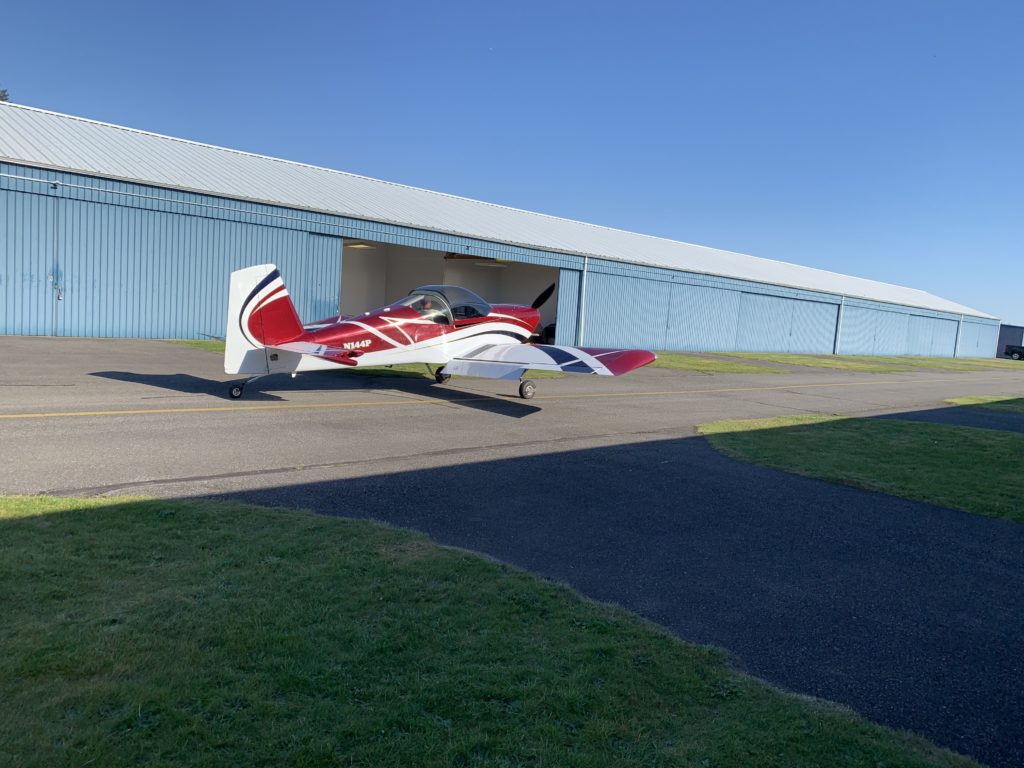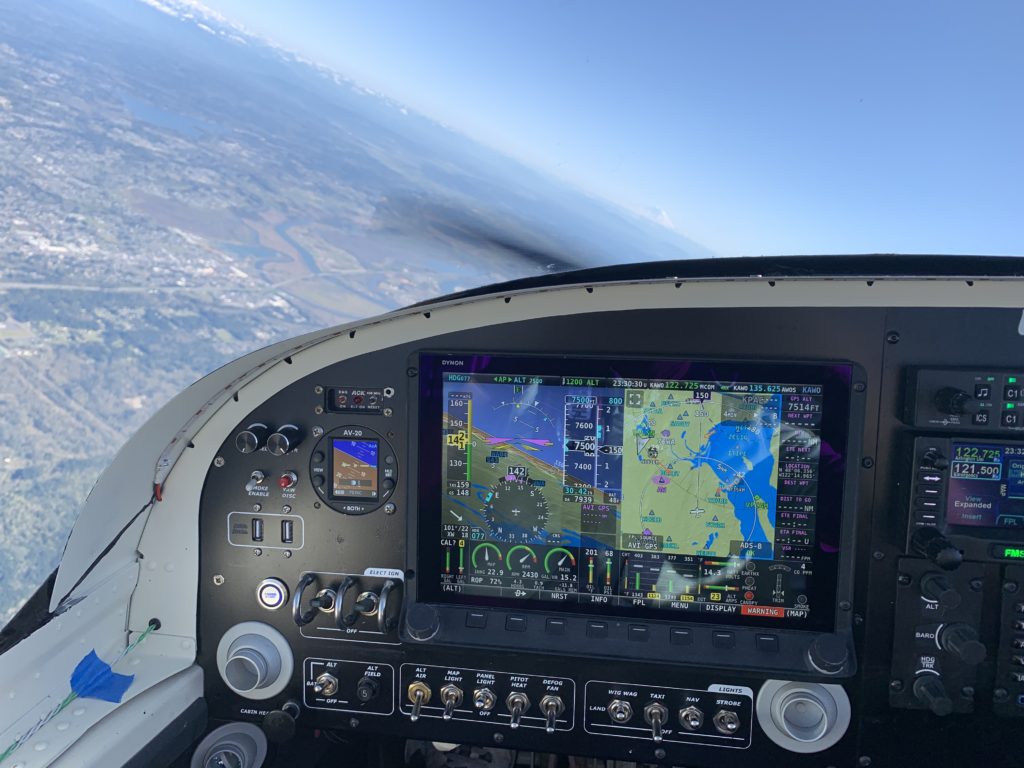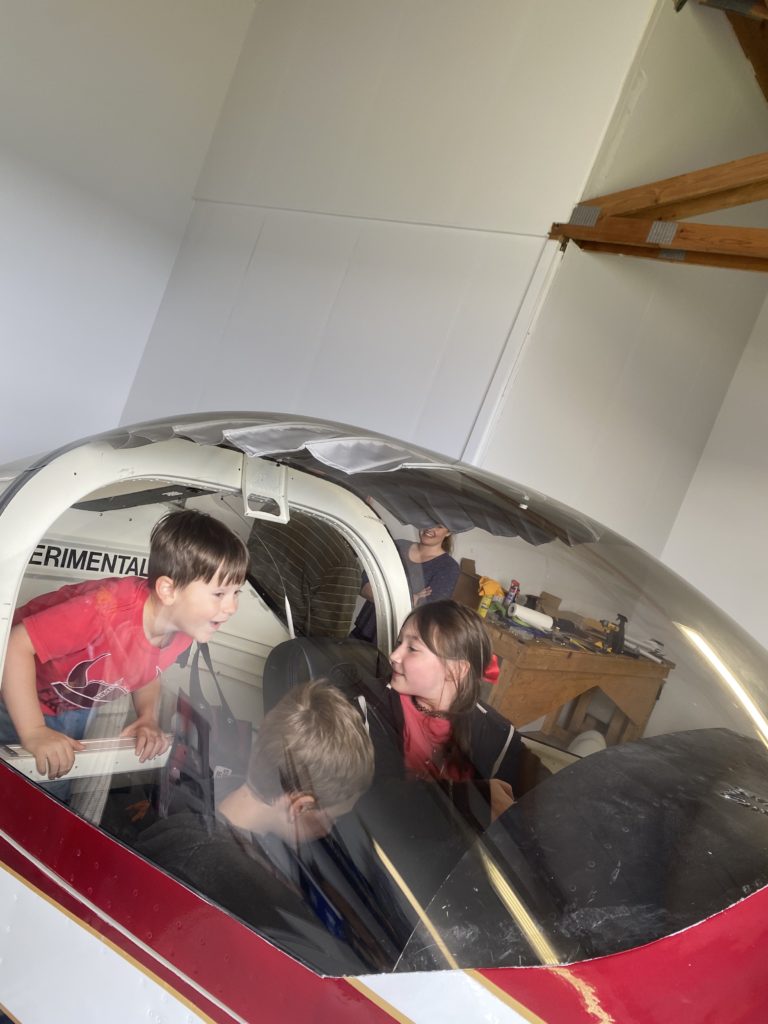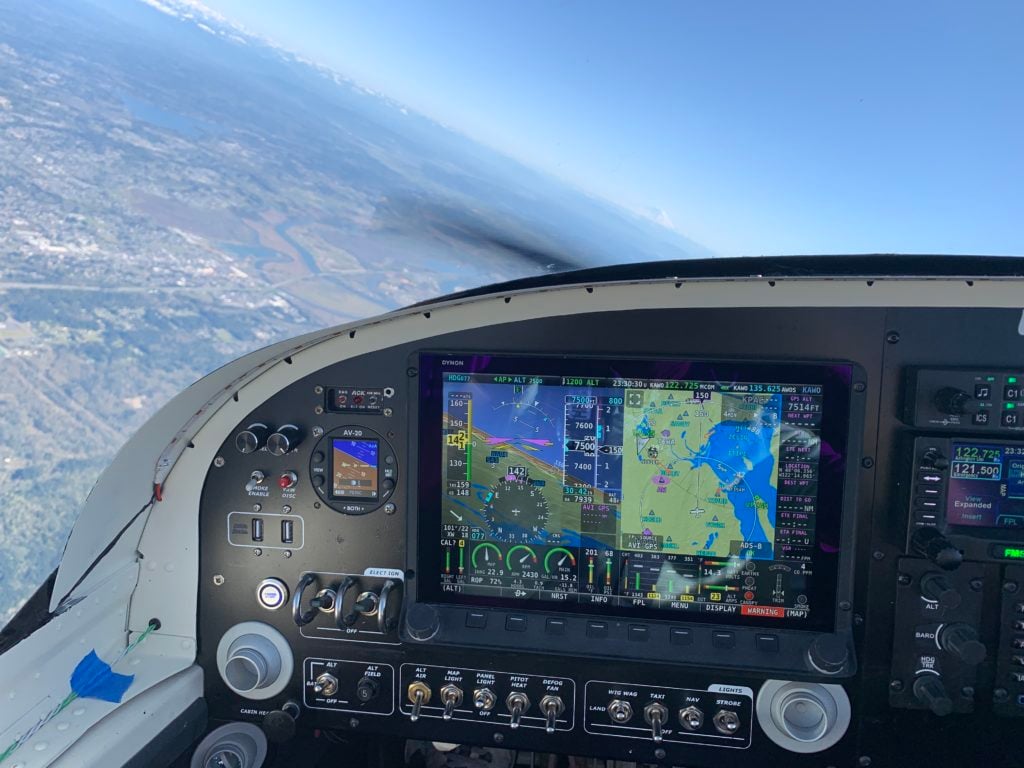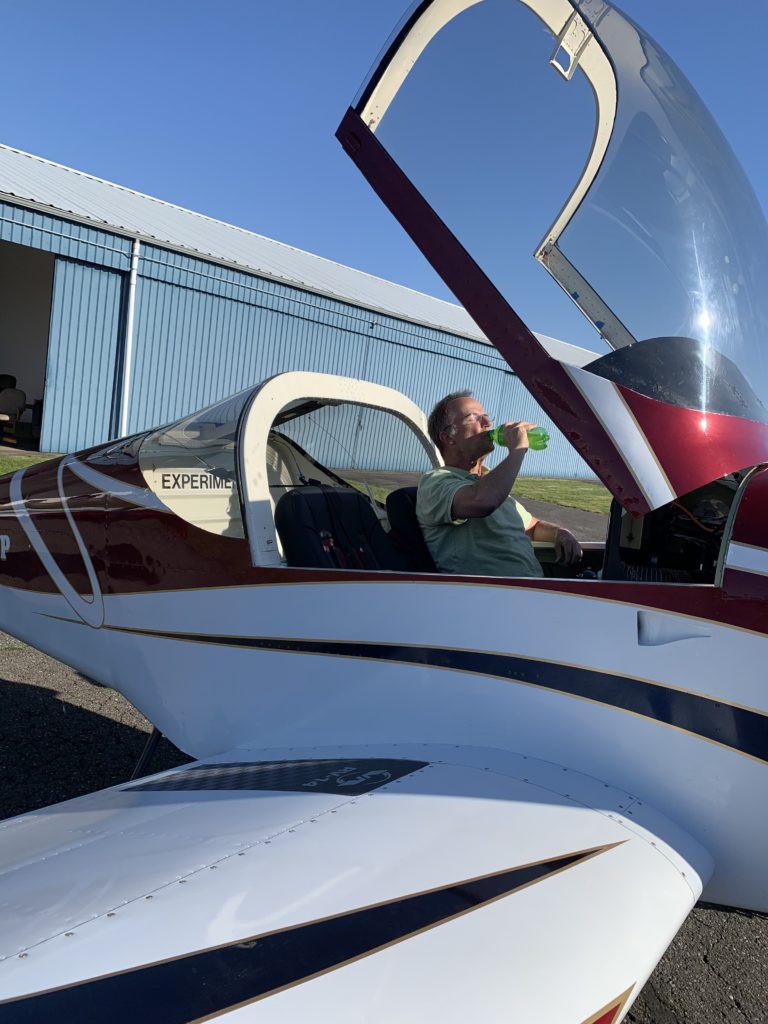Scott Stewart’s RV-14 | Arlington, WA RV-14 #140325
Congratulations to Scott on the first flight of his RV-14! He writes:
It finally happened! After two years of building, and another six months of painting, my RV-14 finally flew this week!
Four years ago, my wife was wandering around the Van’s display at Oshkosh and snuck over to the -14 demo plane. When she found me a few moments later, she told me “You have permission to build the RV-14.” I was perfectly happy with my RV-7 up until this very moment! I found a -14 empennage kit for sale on the Oshkosh bulletin board and began my build.
I built the RV-14 with a few modifications to the basic kit. I swapped the standard shopping cart tailwheel for the Doug Bell fork and the pneumatic tailwheel. The lighting is all FlyLEDs. And the IO-390 / Hartzell blended airfoil 74″ prop have dual Pmags in place of the standard Slick mags.
With the pandemic lockdown, I wasn’t sure if I could get a DAR to do the inspection, so I contacted the local FAA office. Due to my own incompetence, I got in touch with the MIDO instead of the FSDO. The MIDO does all of the Boeing 737 inspections here in the Pacific NW, but they’ve been shut down due to the 737 MAX issue, so they were looking for some work and volunteered to do my inspection. Pretty cool to have a couple of 737 inspectors signing off my plane!
First flight occurred on Apr 17. The purpose of the first flight was Engine Break-In. After rolling onto the runway, I slowly applied power and began the takeoff roll. At 50% power and about 400′ down the runway, the tail lifted smoothly, and at 75% power and 800′ down the runway, my RV-14 broke ground and flew for the first time!
As with any new engine, the break-in process calls for flight at 65 – 75% power for extended times to seat the rings in the cylinders. During that time, the engine CHTs run pretty hot, so engine cooling is the important issue to deal with. My first flight was about an hour long, circling the airport at 7,500′. CHTs started at around 435F during climb, settled out to 420F upon leveling out at 7500′, and came down to 402F prior to reducing power and descending back to land. Since then, I’ve worked on sealing the baffles better and my CHTs are down to about 380F.
So… here’s the flight report…
The RV-14 takes off with flaps at zero degrees. After reaching pattern altitude, raise flaps to the -3 degree position, which results in about 4kt increase in speed. Controls are not as light as the RV-7 controls, but are still very smooth and easy. After climbing to 7500′, I cautiously turned on the auto pilot, and let it fly the rest of the flight.
When it was time to head back to the airport, I found that the -14 needs a lot of pitch trim, especially when the flaps are lowered. Not really a problem, just something to be very aware of.
Landing was very easy, although the RV-14 sits a lot higher than the RV-7, so my sight picture was a little different than I’m used to seeing.
Special thanks to my wife who started the process of building the RV-14. My son Casey who constantly encouraged me as I was building and helped buck a couple of rivets. My good friend Tyler who took my chicken scratch paint design ideas and turned it into a paint scheme that I could be proud of. And all of the people who were willing to teach me new skills, lend a hand, or support the project in so many other ways.
Time to go fly off the next 40 hours and take some of these great people up for a flight!

